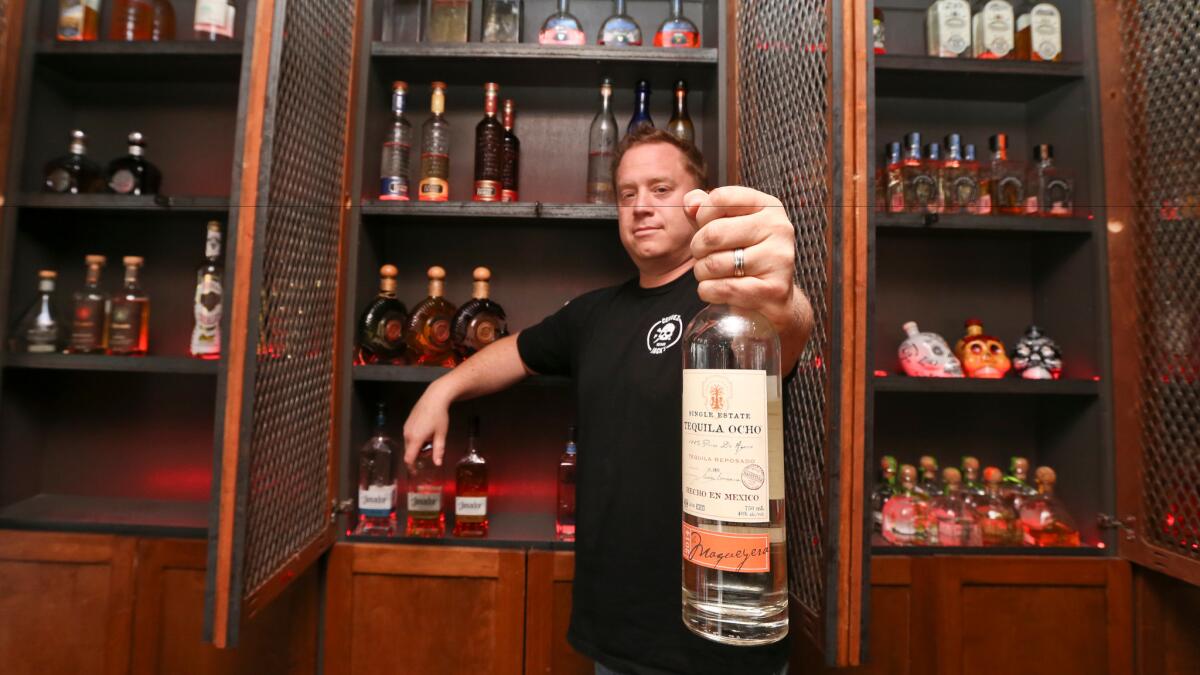More for Your Money: How dynamic pricing affects you, more or less

- Share via
Down a shot of tequila at the Blind Burro in San Diego and the second round may cost you more. Or less.
It all depends on what everyone else is drinking.
Tequila prices at the bar and restaurant can change every five minutes based on demand. If more people order one tequila brand, the price of another might drop.
Software tracks what drinkers buy and flashes the changing prices of more than two-dozen tequila brands on TV screens on the bar’s walls.
The quick change in prices is known as dynamic pricing. Airlines have used the strategy for years, charging more for flights at the busiest times. Uber does it, too, increasing fares when more people need a ride.
Now other industries are joining in, including zoos, sports teams, theme parks and producers of live shows. When you’re planning your vacation budget, you need to be aware that timing can affect you more than you imagine.
The Indianapolis Zoo switched to dynamic pricing before opening its orangutan exhibition two years ago. Tickets used to be about $17. Now they change daily online and can cost $8 to $30.
Weather, demand and day of week (weekends cost more) can determine price.
In New York, hit Broadway shows started using dynamic pricing about five years ago, said Ken Davenport, the theater producer behind “Kinky Boots,” “Spring Awakening” and other shows.
Broadway fans can usually get a deal in January, February and September, said Davenport, who also writes about the industry on his blog TheProducersPerspective. Tickets are pricier in December and the summer months when more tourists make their way to New York.
All of this might sound like bad news for consumers, but you can still find deals, if you’re aware. Here are four steps to getting a deal
1. Figure out whether a venue uses dynamic pricing. Any place that has a set number of seats or capacity, such as theaters or theme parks, is more likely to use dynamic pricing. Many will tell you on their website that they use dynamic pricing. Do an Internet search. Baseball’s New York Mets, for example, has a page online answering questions about how its dynamic pricing works.
2. Plan. Waiting until the last minute to buy tickets probably means you’ll pay more. Most venues will post ticket prices months ahead of time, and they’ll usually increase as the dates get closer.
3. Skip weekends and holidays. Expect higher ticket prices on and around the Fourth of July, Easter or other holidays. If you must attend that day, try to buy tickets far in advance. In New York, tickets for hit Broadway shows tend to cost the most between Christmas and New Year’s Day, when tourists are flocking to the city.
4. Don’t just show up. When a venue uses dynamic pricing, those who pay early (and online) often get the best deal.
For example, if you show up at Universal Studios Hollywood without a ticket, you will likely pay more at the gate. Tickets at the gate cost $115, but online they can cost as little as $90.
Associated Press reporter Julie Watson contributed to this report. travel@latimes.com
Sign up for The Wild
We’ll help you find the best places to hike, bike and run, as well as the perfect silent spots for meditation and yoga.
You may occasionally receive promotional content from the Los Angeles Times.



